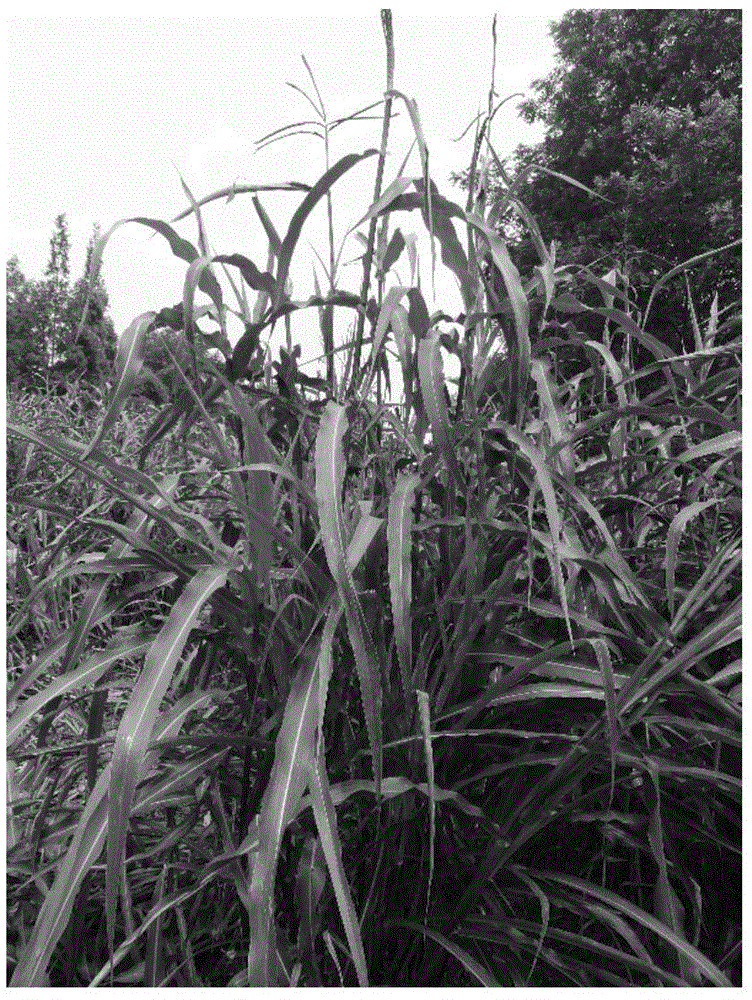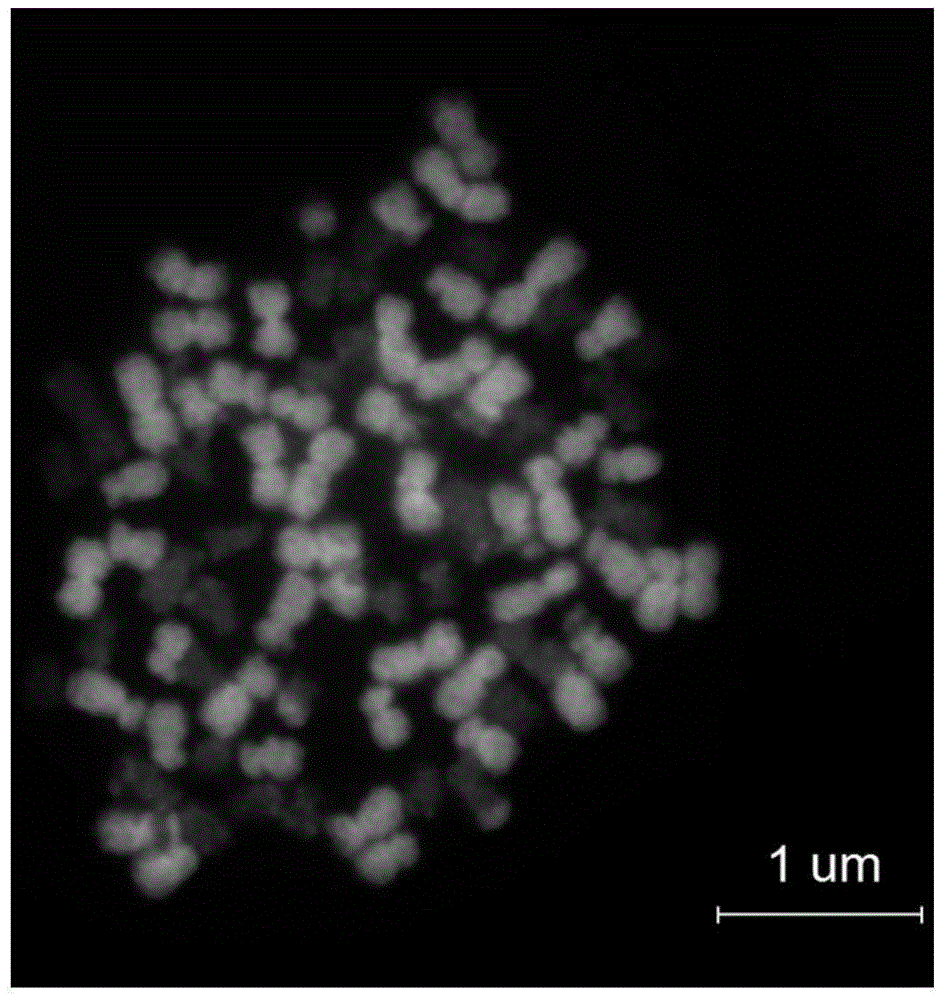Method for Cultivating Maize Allopolyploid by Utilizing Unreduced Gamete Characteristics of Fried Grass
A technology of allopolyploidy and rubbing grass, which is applied in the field of plant distant hybridization, can solve the problems of difficult traits of close relatives of maize, difficulty in producing breakthrough varieties, and narrow genetic basis
- Summary
- Abstract
- Description
- Claims
- Application Information
AI Technical Summary
Problems solved by technology
Method used
Image
Examples
Embodiment 1
[0102] Example 1. Cultivation of maize allogenous heptaploids using MTF-1 and the unreduced gamete characteristics of Trichograss
[0103](1) In Huihe Village Farm, Wenjiang District, Chengdu, Sichuan Province, from the end of March, the corn inbred line Mo17 (Zeamays, 2n=20) was planted in 10 batches with 10 days between each batch and 70 plants in each batch , the spacing between plants and rows is 35cm×60cm; in early April, MTF-1 (TripsazeacreammaizeT. Su Yuegui, Master Thesis of Sichuan Agricultural University, 2009. Publicly available from Sichuan Agricultural University) (see figure 1 ) are planted separately in the field, with a row spacing of 2m×2m, a total of 50 plants;
[0104] (2) At the silking stage, before the MTF-1 ear is silked, put the MTF-1 ear in a kraft paper bag, and after the ear is silked, cut the silk to 1 cm, and use Mo17 as the male parent to MTF- 1 Ear pollination, repeat pollination at least 3 times for each ear, mark on the kraft paper bag after e...
Embodiment 2
[0109] Example 2. Cultivation of maize allo-octoploid using MTF-1 and the unreduced gamete characteristics of Trichograss
[0110] Proceed as follows:
[0111] (1) In Huihe Village Farm, Wenjiang District, Chengdu, Sichuan Province, from late March, tetraploid perennial maize 9475 (Zeaperennis9475, 2n=40) was planted in 7 batches (provided free of charge by the Mexico International Maize and Wheat Improvement Center), The interval between each batch is 7 days, and each batch has 10 plants. The tetraploid perennial maize is planted on a single plant, and the distance between plants and rows is 2m×2m; .Su Yuegui, Master Thesis of Sichuan Agricultural University, 2009. The public can obtain it from Sichuan Agricultural University) and planted separately in the field with a row spacing of 2m×2m, a total of 50 plants;
[0112] (2) At the silking stage, before the MTF-1 ear is silked, put the MTF-1 ear in a kraft paper bag, and cut the silk to 2 cm after the ear is silked, and use ...
Embodiment 3
[0117] Example 3, Comparison Test of Determination of Ear and Tassel Characters of Maize Allo-octoploid MTFF-1 and Maize Allohexaploid MTF-1
[0118] Proceed as follows:
[0119] (1) In April 2012, maize allo-octoploid MTFF-1 (Example 2) and maize allohexaploid MTF-1 (provided by Sichuan Agricultural University) were planted on plastic flowers by means of split propagation Pots (caliber 40cm x height 33cm), each material planted 10 pots.
[0120] (2) Determination period and the measured morphological traits
[0121] After the plants entered the tasseling and silking stage, three pots of maize allo-octoploid MTFF-1 and maize allohexaploid MTF-1 were randomly selected, and the filament length, ear length, and inflorescence were measured with a ruler and an Olympus SZX16 fluorescent stereoscope. Long, main stem long floret anther length, main stem short floret anther length, main stem long floret length, main stem short floret length; count the number of spikes on the main ste...
PUM
| Property | Measurement | Unit |
|---|---|---|
| height | aaaaa | aaaaa |
Abstract
Description
Claims
Application Information
 Login to View More
Login to View More - R&D
- Intellectual Property
- Life Sciences
- Materials
- Tech Scout
- Unparalleled Data Quality
- Higher Quality Content
- 60% Fewer Hallucinations
Browse by: Latest US Patents, China's latest patents, Technical Efficacy Thesaurus, Application Domain, Technology Topic, Popular Technical Reports.
© 2025 PatSnap. All rights reserved.Legal|Privacy policy|Modern Slavery Act Transparency Statement|Sitemap|About US| Contact US: help@patsnap.com



